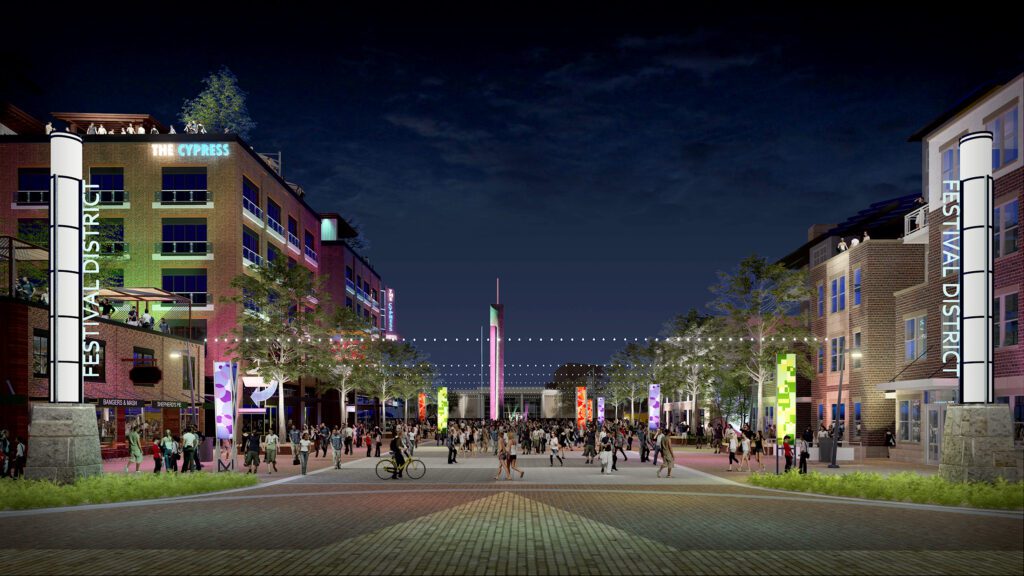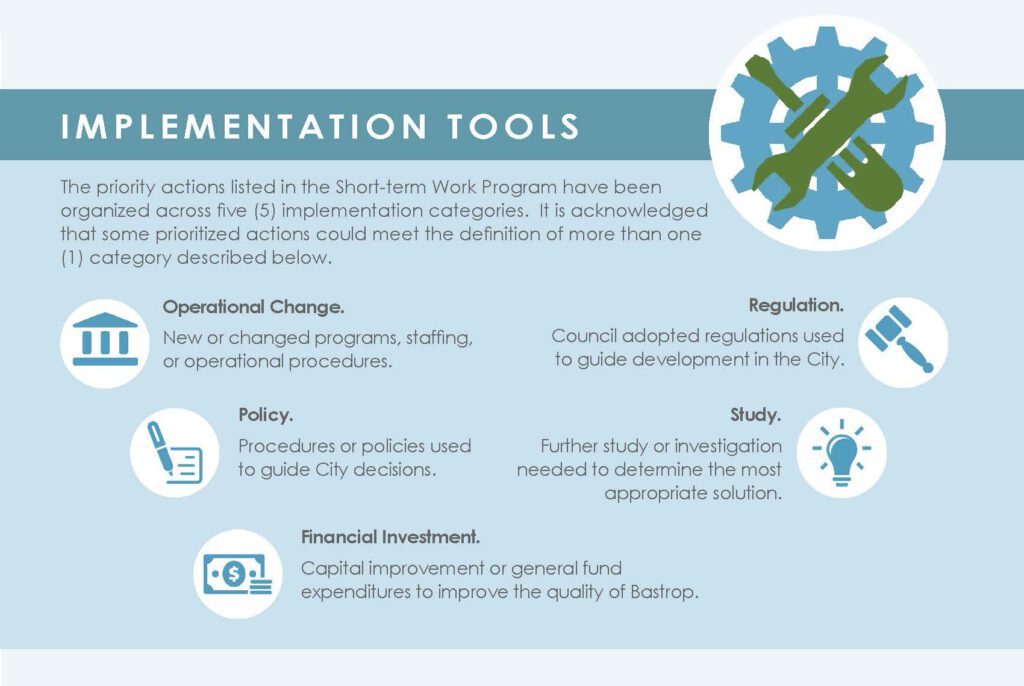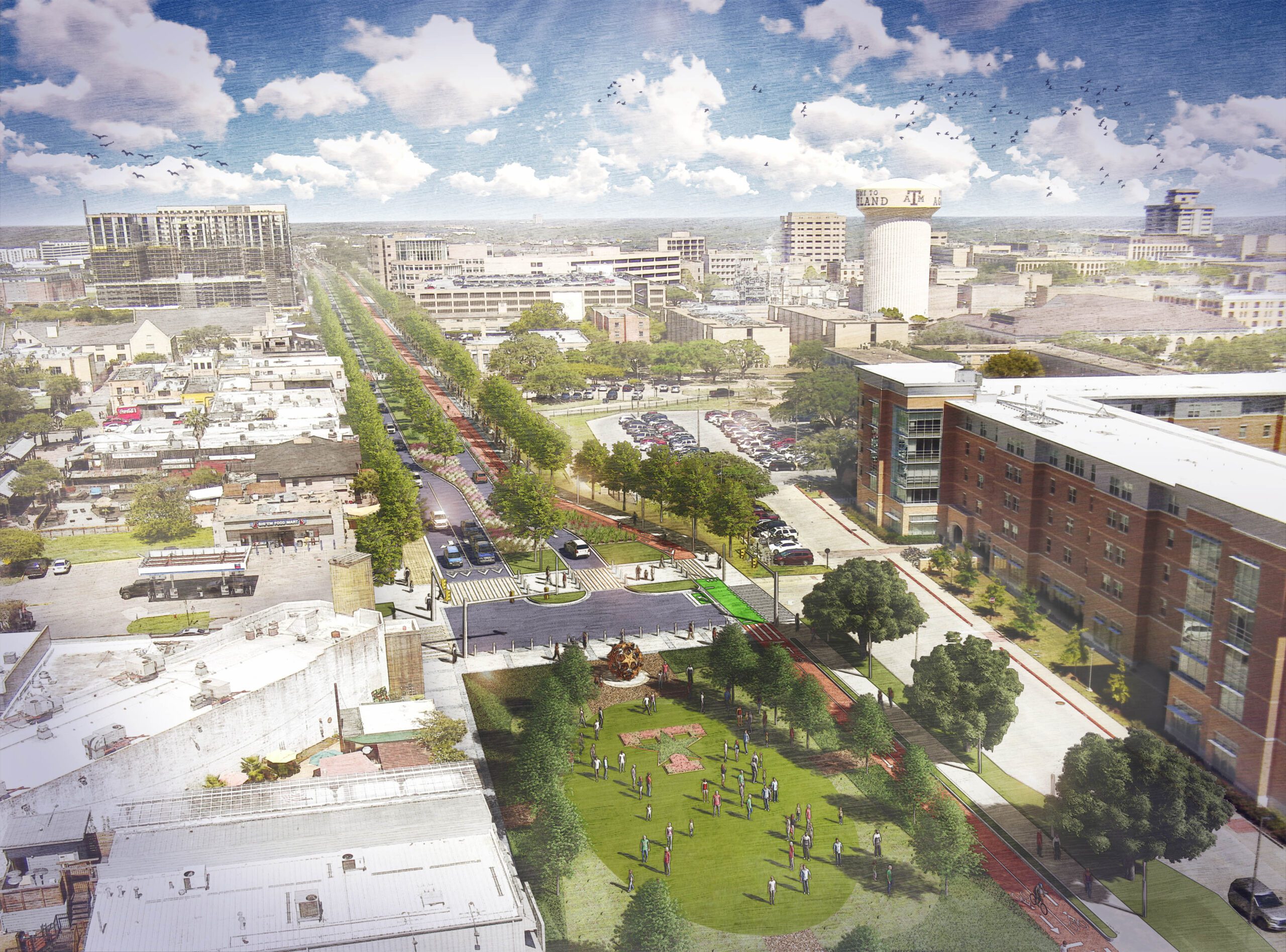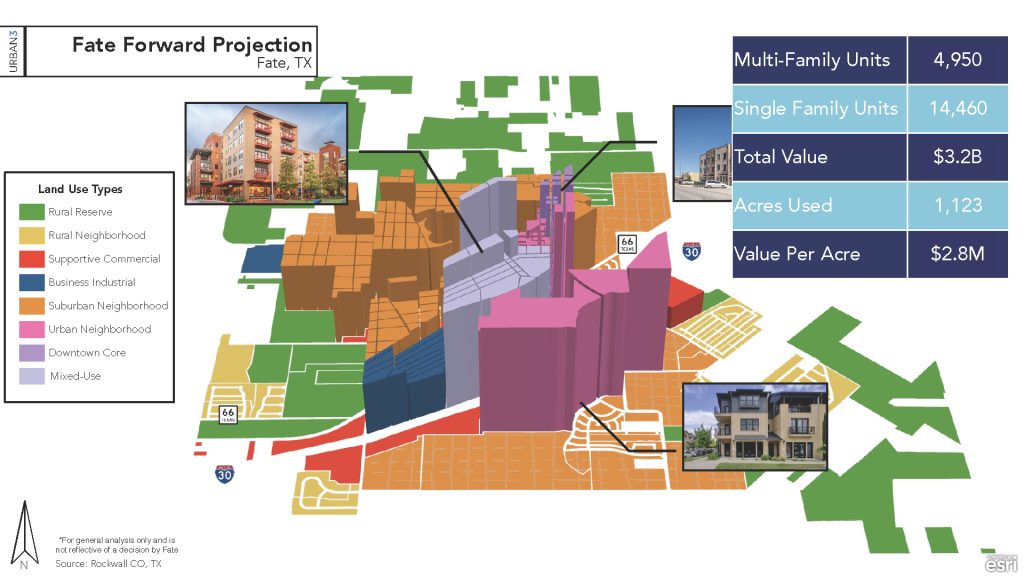A Blueprint for Communities: The Importance of Implementable Comprehensive Plans
Comprehensive plans play a pivotal role in guiding the future of cities throughout the country. They act as a compass guiding us toward sustainable, resilient and vibrant communities. You can’t build a house without blueprints. And you can’t grow a community without a vision.
Jump to Section
- What is a Comprehensive Plan?
- What Makes a Comprehensive Plan “Implementable?”
- 3 Important Procedures
- Plan in Action: Fate Comprehensive Plan
What is a Comprehensive Plan?
A comprehensive plan is a long-range plan for a city, which captures the vision of where the community wants to be at some point in the future. The term comprehensive suggests it is an all-inclusive approach to analyzing and evaluating the future growth of a community. At minimum, most comprehensive plans provide guidance for the physical development of a community, with an emphasis on future land use and thoroughfare planning.
Many comprehensive plans also include guidance on elements such as:
-
-
- Community growth and annexation
- Infrastructure capacity
- Housing and neighborhoods
- Public facilities
- Parks, open space, recreation and trails
- Economic development
- Urban form and design
- Sustainability and resilience
-
Some comprehensive plans are embodied in a single, all-inclusive document; others are organized by an umbrella document cross-referencing more specific sub-plans such as an independent parks master plan.

There is great value in undertaking a comprehensive planning process, and often the process itself is as informative as the final document. A comprehensive planning process:
-
-
- Allows a jurisdiction to be proactive and have greater control over its destiny.
- Allows a jurisdiction to step back from day-to-day activities, and identify factors influencing and shaping the community.
- Provides one of the only opportunities to comprehensively analyze a community and evaluate how competing interests can be balanced.
- Provides guidance for the orderly growth, development and physical appearance of the community.
- Builds consensus and commitment from elected and appointed officials, staff, the overall community and other interested stakeholders.
- Provides guidance for future decision-making.
- Prepares a community for action.
-
What Makes a Comprehensive Plan “Implementable?”
The plan must be rooted in the implementation mechanisms that turn an idea into action within an established process following adoption.
Common Integrated Tools
There are several critical components that should be directly integrated into the main plan document. These include the community vision for the future, the future land use plan and the thoroughfare plan.
Together, these provide overarching guidance to the future physical development of a community. They also provide an intrinsic connection between future land use and the jurisdiction’s thoroughfare plan—two critical aspects of community form that need to be cohesive.
-
Vision. The community vision needs to be derived from a robust public engagement process. The results of this process are embodied in the vision statement, guiding principles, goals, objectives, and in many cases, element-based policy statements. The importance of the vision is two-fold: 1) It identifies how and where a community aspires to grow. 2) It identifies what a community is willing to support during implementation.
-
Future Land Use Plan. The future land use plan, which includes the future land use map and its associated classification descriptions, provides essential guidance for decision-making (e.g., during rezoning decisions and updates to development regulations regarding the future growth and character of the community). It provides property owners and the community predictability in the future built environment. It needs to identify a future build-out scenario supported by the community vision, yet still based in market reality. The plan needs to be developed in a way that establishes a partnership between the public and private sectors, who together will shape the community one property at a time.

-
Thoroughfare Plan. The thoroughfare plan provides essential guidance regarding jurisdiction-wide connectivity. Its focus should be on arterial and collector street connections that provide through-connectivity, ensuring that as a community grows over time, residents and visitors can traverse the community in a logical and efficient manner. While many communities have independent, more refined thoroughfare master plans, the thoroughfare plan map should be generated in concert with the future land use plan and be embodied within the comprehensive plan. This ensures they are developed cohesively and create one overarching framework for community form and connectivity.
Action-Oriented Implementation Tools
In some comprehensive plans, the vision, future land use and thoroughfare plans may be the only guidance for how a jurisdiction should move forward.
A truly implementable comprehensive plan should provide an action plan that can be accomplished incrementally in defined timeframes during the plan horizon.

Most implementation actions can be categorized into the following classifications, which identify the processes common to most jurisdictions:
-
Regulatory Updates. Predictable change of the built environment cannot be accomplished by a future land use map alone. Most of the physical change comes from private-sector investment in new development and redevelopment. An implementable comprehensive plan should provide guidance on how the community vision for the future can and should be translated into subsequent regulatory amendments to the jurisdiction’s zoning, subdivision and other development-related regulations.
-
Capital Improvements. While much of the built environment is created by the private sector, it is built upon the backbone created by the public sector through infrastructure investment and long-term maintenance such as streets, water, wastewater and drainage. Implementable comprehensive plans should identify where new or redeveloped public infrastructure (e.g., water line extensions) can be placed to spur additional private-sector investment. Public sector projects (e.g., downtown streetscape enhancements) can even be the catalyst project that creates momentum for moving forward. An implementable comprehensive plan should provide guidance on how capital improvement actions can be integrated into the jurisdiction capital improvement program or plan (CIP).
- Non-Capital Improvements/Operational Changes. A jurisdiction similarly provides a series of services for essential community functions such as police, fire, EMS, parks and libraries. It is imperative that a comprehensive plan provides guidance as to how the community vision translates into new or modified community services. It should guide how non-capital improvements/operational changes can be integrated into a jurisdiction’s annual budgeting process.
-
Future Studies. It is often said that a comprehensive plan should view a jurisdiction at a 30,000-foot level. This means it needs to remain at a high level and should not “dive into the details.” Consequently, it should determine whether future studies may be needed to better achieve implementation. This could include providing strategic directions on what needs to be considered during the next update of an existing, more refined sub-plan (e.g., a parks master plan), or the request for an entirely new plan such as a corridor plan, neighborhood reinvestment or other sub-area plan.
-
Policies. Some communities choose to declare its philosophy or strategic directions through an actual policy document, such as a Complete Streets policy. In other cases, implementation of an action may first require an informal determination to move forward, such as promoting or incentivizing infill development in areas served by public infrastructure. These “strategic directions” may serve as policy directions and will eventually lead to other implementation actions.

3 Important Procedures
A truly implementable comprehensive plan needs to remain current, and front and center. There should be established procedures for integrating the plan into decision-making, keeping it updated and providing accountability for implementation over time.
Mechanism for Decision-Making. In some jurisdictions, the vision, guiding principles, goals, objectives and element-based policies are used as part of decision-making during rezonings and development-related processes. Other jurisdictions require conformance with the comprehensive plan for all items placed on the agenda of an appointed board or commission. This ensures elected and appointed officials, staff, developers and the community understands the importance of the comprehensive plan.
Annual Progress Report and Updates. A comprehensive plan, or any plan for that matter, only truly reflects a snapshot in time. While it provides short- and long-term guidance for the future, it will not get everything right nor will it be perfectly implemented. It is intended to provide guidance moving forward, and it is not set in stone. It can only be effective if it is up to date and relevant with current community realities. The comprehensive plan must be made available to the public, in places such as the jurisdiction’s website, and must be kept updated as implementation actions are completed over time (i.e., checking off completed actions and reprioritizing remaining actions, reporting progress to elected/appointed officials, and periodically updating the plan through annual updates, five-year evaluation and 10-year update).
Implementation Accountability. There is no substitute for accountability. It is essential that procedures are in place to identify who is responsible for managing the implementation program. In many jurisdictions, positions such as the city manager (or assistant city manager) or planning director are designated as the implementation manager.
Creating an implementable comprehensive plan takes a concerted effort by the entire community. It is not always an easy process, but it is essential for your community’s future.
Comprehensive Plans in Action
The City of Fate’s Comprehensive Plan provided the City with a blueprint grounded in fiscal resiliency and Strong Towns principles to promote sustainable growth and minimize the community’s long-term financial burden.
A character-based future land use plan was created to reflect the suburban and rural character the community. A “fiscal checklist” was established based on seven core value statements generated during an extensive community engagement process.
Our planners took a deeper dive and created two sub-area plans focused on downtown and the I-30 corridor. These sub-area plans provided a flexible framework for design standards based on the built environment and future market needs of the City. The proposed standards were incorporated into a land development code update, and our team utilized several “implementation bootcamps” to teach City staff and the development community how to incorporate these standards into future development plans. Since plan adoption, implementation progress is being tracked via an online dashboard to provide transparency to the public.
See Halff’s experience with comprehensive plans in the following projects:
-
- The Community Vision Plan for Salado East | San Antonio, TX
- El Paso County Parks and Recreation Master Plan | El Paso, TX
- Killeen Parks and Open Space Master Plan | Killeen, TX
- Pearland Multi-Modal Master Plan | Pearland, TX
- Fate Comprehensive Plan | Fate, TX
- Cross Creek Master Planned Community | Hutto, TX
Want to learn more about implementable comprehensive plans? Visit Halff’s Planning and Landscape Architecture pages to learn more and contact us today!





